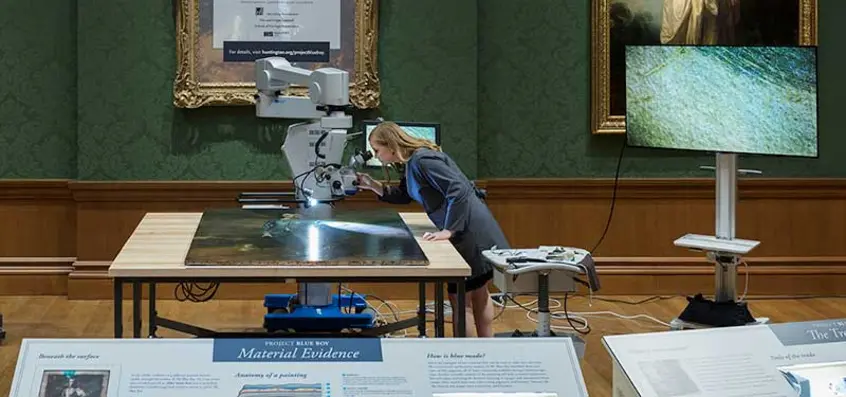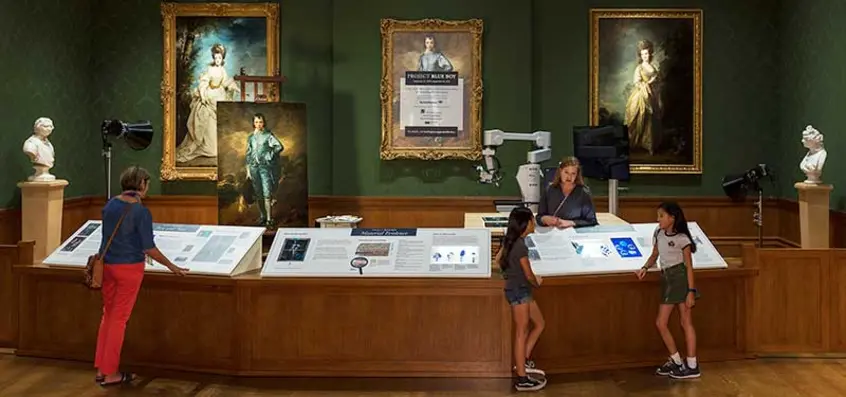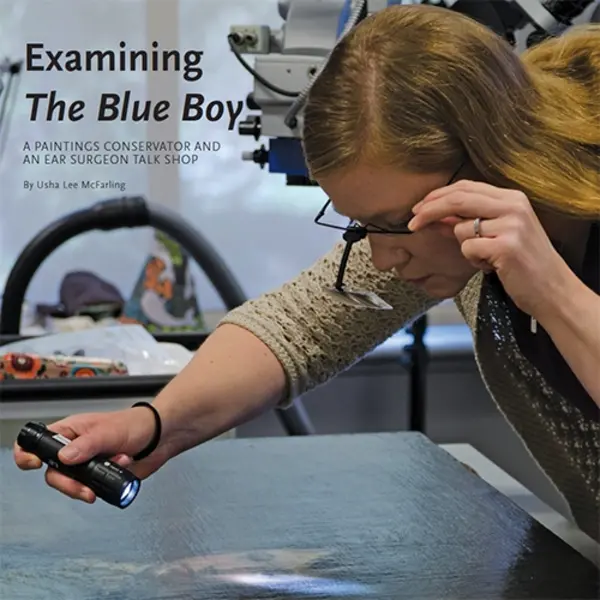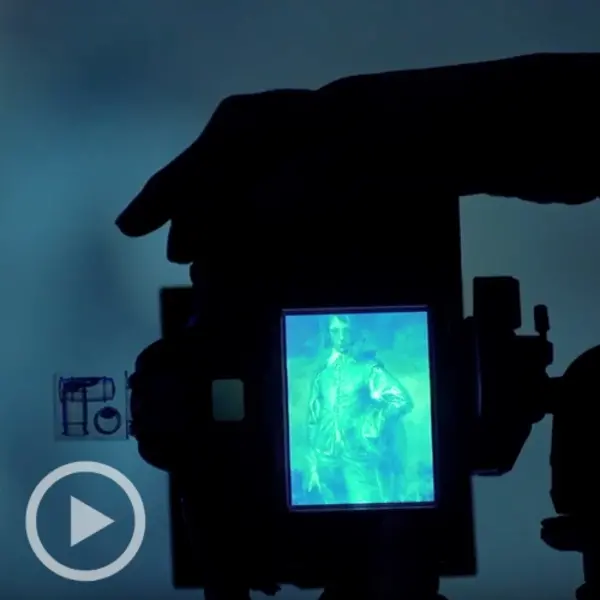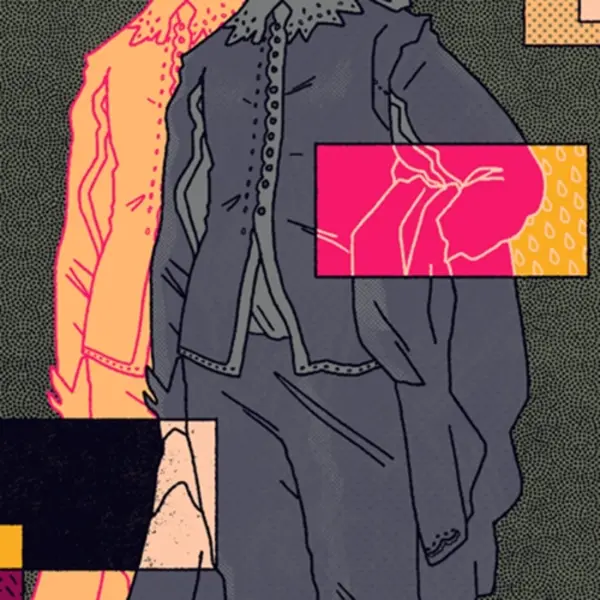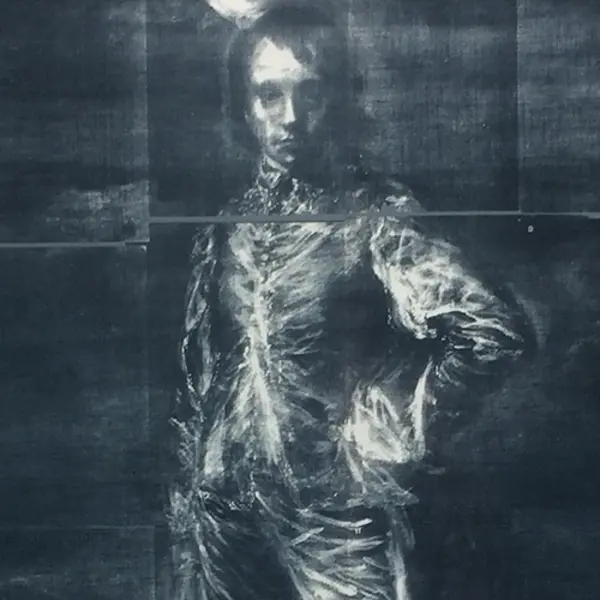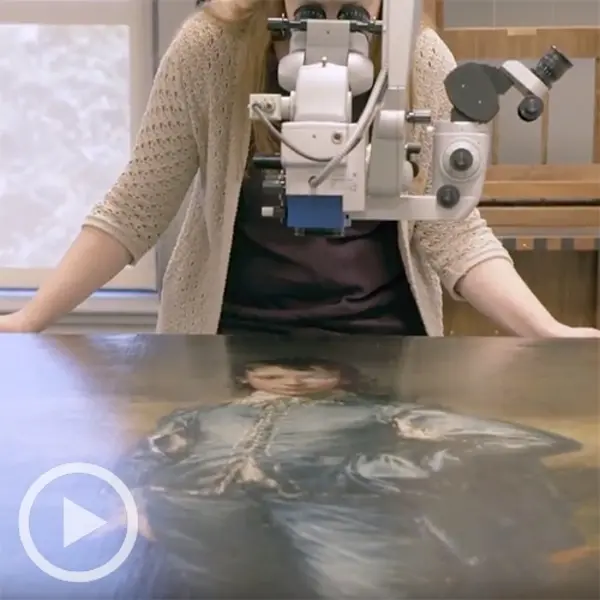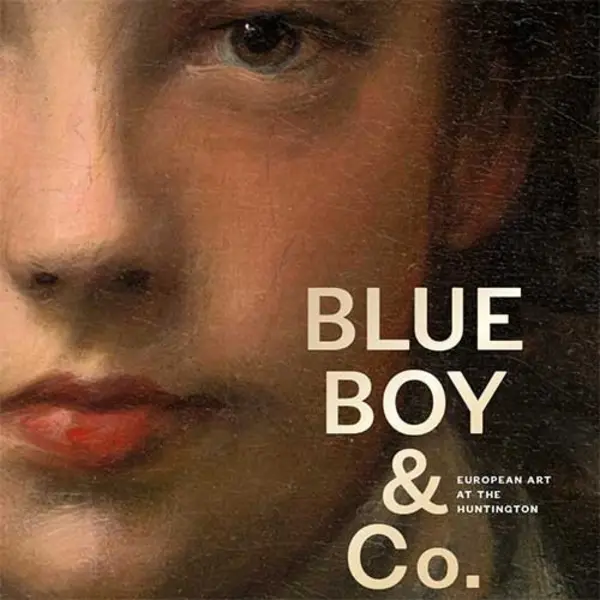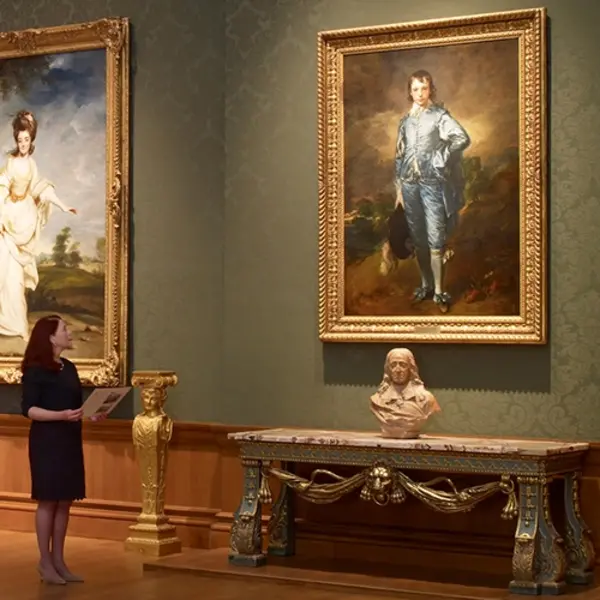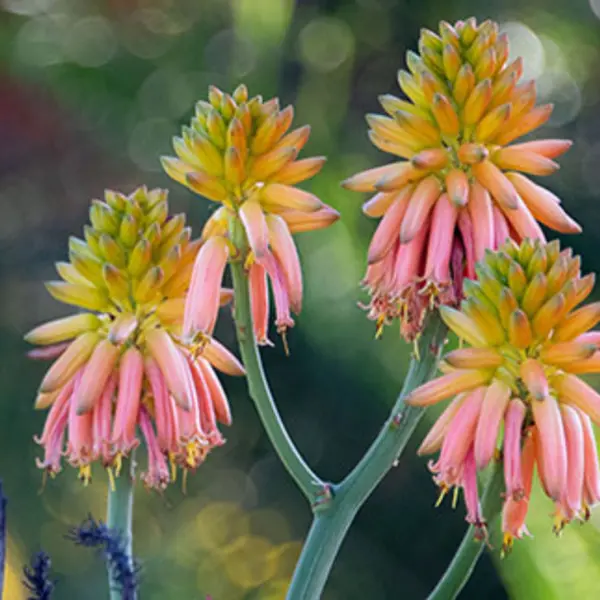Project Blue Boy
Science journalist Usha Lee McFarling sat down with Christina O'Connell, paintings conservator for Project Blue Boy, and John House, ear surgeon of the House Ear Clinic in Los Angeles, as they talked over the project.
The Blue Boy undergoes its first major technical examination and conservation treatment in public view, in a special satellite conservation studio set up in the west end of The Huntington's grand portrait gallery.
The Atlantic takes readers inside the massive, two-year museum effort to conserve The Blue Boy, Thomas Gainsborough's famed 18th-century portrait.
X-rays of 'Blue Boy' and 'Pinkie' and other British masterpieces reveal ghost images and the choices the artists made while painting.
Senior paintings conservator Christina O'Connell goes "eye to eye" with The Huntington's most famous painting with the help of a Hi-R NEO 900 Haag-Streit surgical microscope, on loan from Haag-Streit USA.
Huntington art curators Catherine Hess and Melinda McCurdy unveil Blue Boy & Co., a 179-page book highlighting the richness and diversity of The Huntington’s European collection.
So The Blue Boy is a big deal. But what’s the story behind the famous painting’s frame?
A blue-themed musical companion to the Project Blue Boy exhibition. Enjoy the sounds and share the playlist with your friends. (A free Spotify account is required to access playlist)
Enjoy an oasis of culture and art, breathtaking gardens, world-class exhibitions and much more!

